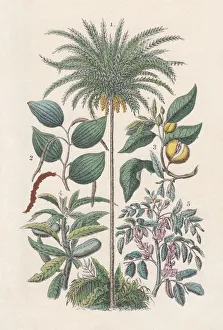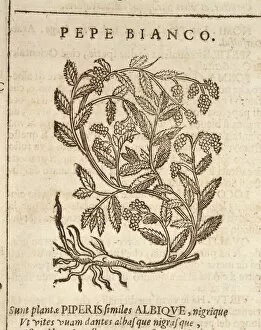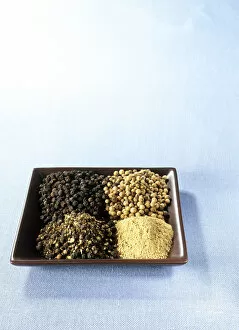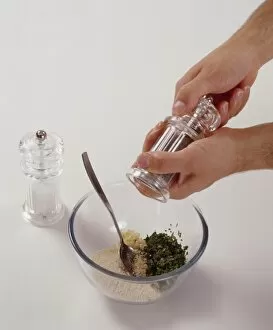Black Peppercorn Collection
"Discover the Versatile and Valuable Black Peppercorn: A Glimpse into Economic Plants of the Past" Step back in time with this hand-colored lithograph, published in 1880
All Professionally Made to Order for Quick Shipping
"Discover the Versatile and Valuable Black Peppercorn: A Glimpse into Economic Plants of the Past" Step back in time with this hand-colored lithograph, published in 1880, showcasing the remarkable black peppercorn (Piper nigrum). Known for its distinct flavor and aroma, black pepper has been a staple spice for centuries. This flowering vine, scientifically known as Piper nigrum, holds immense economic importance. Its dried berries are harvested to produce these precious peppercorns that grace our tables worldwide. As depicted in this beautiful illustration, clusters of peppercorns adorn green leaves, highlighting their natural allure. Black pepper's significance stretches across history. In an engraving by Castore Durante from 1585, we witness how white pepper is derived from the same plant through a unique process. This ancient technique showcases the versatility of Piper nigrum and its ability to offer different flavors based on processing methods. From traditional Pakistani cuisine to Italian delicacies like Piacentinu Ennese eweA or fettuccine served with butter and ground black peppercorn – this humble spice adds depth and character to countless dishes around the globe. It brings warmth and complexity when sprinkled over minced meat or freshly prepared meals. In modern kitchens today, you may find young chefs using a pepper mill to grind whole black peppercorns directly onto their culinary creations. The aromatic burst released by these freshly ground spices elevates any dish it touches. Let us not forget Xinjiang dried raisins – another ingredient associated with rich Pakistani cuisine – where black peppercorns often make an appearance alongside other flavorful elements. These combinations create harmonious symphonies on our taste buds. As we admire this captivating lithograph from 1880 depicting Piper nigrum's beauty and value as an economic plant, let us appreciate how it continues to enhance our gastronomic experiences even today.





















